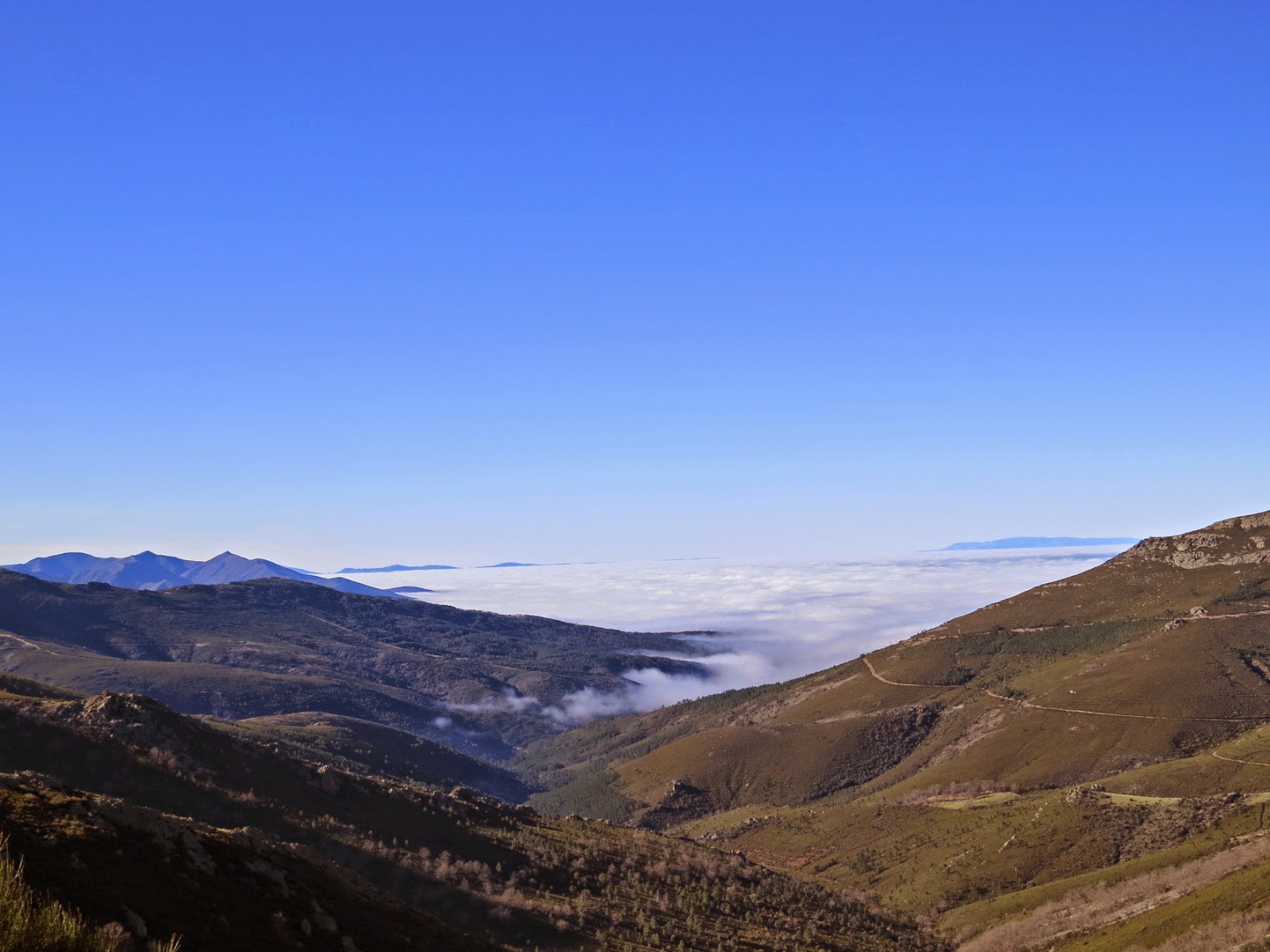Better late than
never I'd like to wish you a Happy New Year.
Although with
climate change, crisis and the government's nefarious environmental policies
(I'm speaking about Spain here, though I'm sure a lot of other countries would
apply) the future for birds and nature looks difficult, I remain optimistic
that positive changes are possible through dialogue and cooperation with those
who are most connected with the land and therefore responsible for the direct
custody of the natural world. Here in Castilla y León there is a large and
active network of ecologists, naturalists and bird lovers in general who are
committed to protecting our wonderful natural heritage, and who participate in
bird census and conservation programmes as well as educating the public and doing
their bit for the cause. It's an uphill struggle at times, but every day there
are more of us and that's encouraging.
In December we
went to the Peña de Francia (the highest peak in the Sierra de Francia at 1728m
) to see Spanish Ibex Capra pirenaica and Alpine Accentor Prunella collaris. Neither disappointed
us, and the views with seas of fog below were magnificent. The surprising thing
is the presence of Crag Martin at this time of year, but obviously they have
enough to eat or they wouldn't be there.
Peña de Francia
 |
| Griffon vultures |
 |
| Views over the Sierra de Francia |
 |
| Spanish Ibex Capra pirenaica |
 |
| Alpine accentor |
 |
| Raven kingdom |
 |
| 'Here's lookin' at you' |
 | ||||
| Crag martin
A
couple of trips to an artificial lagoon in NE Salamanca rewarded us with close
views of Kestrel, Red Kite, Buzzard and Marsh Harrier, as well as a dozen
Partridges perched on the dam bridge, and on our second visit 4 Brent geese
(ssp Bernicla) as well as 4 White fronted geese amongst hundreds of
Greylag geese, Cormorant, Mallard and Shoveler, and Cranes coming in to graze
around the surrounding pastures.
Marsh harrier Buzzard Red Partridge Four brent geese in a row Cormorants
Greylag geese
We had some beautiful frosty mornings and around our patch there's an abundance of Spanish Sparrow Greenfinch and Corn bunting decorating the rosebushes as well as one little chap that comes to feed at the bird-table and valiantly fends off all competitors.Frosty horse Spanish sparrows Greenfinch
Corn bunting
Spanish sparrow
The Azure winged magpies are easy to
see in winter as they frequent areas where cattle graze and either directly steal
the cow's food or feed off insects on cowpats.
Azure-winged Magpie
We took part in a Crane survey one evening with another group of birders and counted Cranes flying in to roost. Not an easy task, as they come in from various directions and sometimes wheel around again but there were over 2000 counted coming in from the northeast only so if the same amount came in from the west and south we can guess that there are several thousand wintering at the reservoir. We just need more volunteers to count them.
Cranes
One morning our friend and colleague from the Casa Rural El Gorgocil took us to see some remains of a Roman Villa and path, as well as a very old Bull-ring. What is left of the Villa has been used over the centuries by local farmers as entrance posts to their fields, and the ancient paths are mainly recognised by regular lines of stones running crossways and acting as retainers for the smaller cobbles.Roman posts? Roman way Bull ring
Lightning-struck Holm oak
|






















.jpg)











































